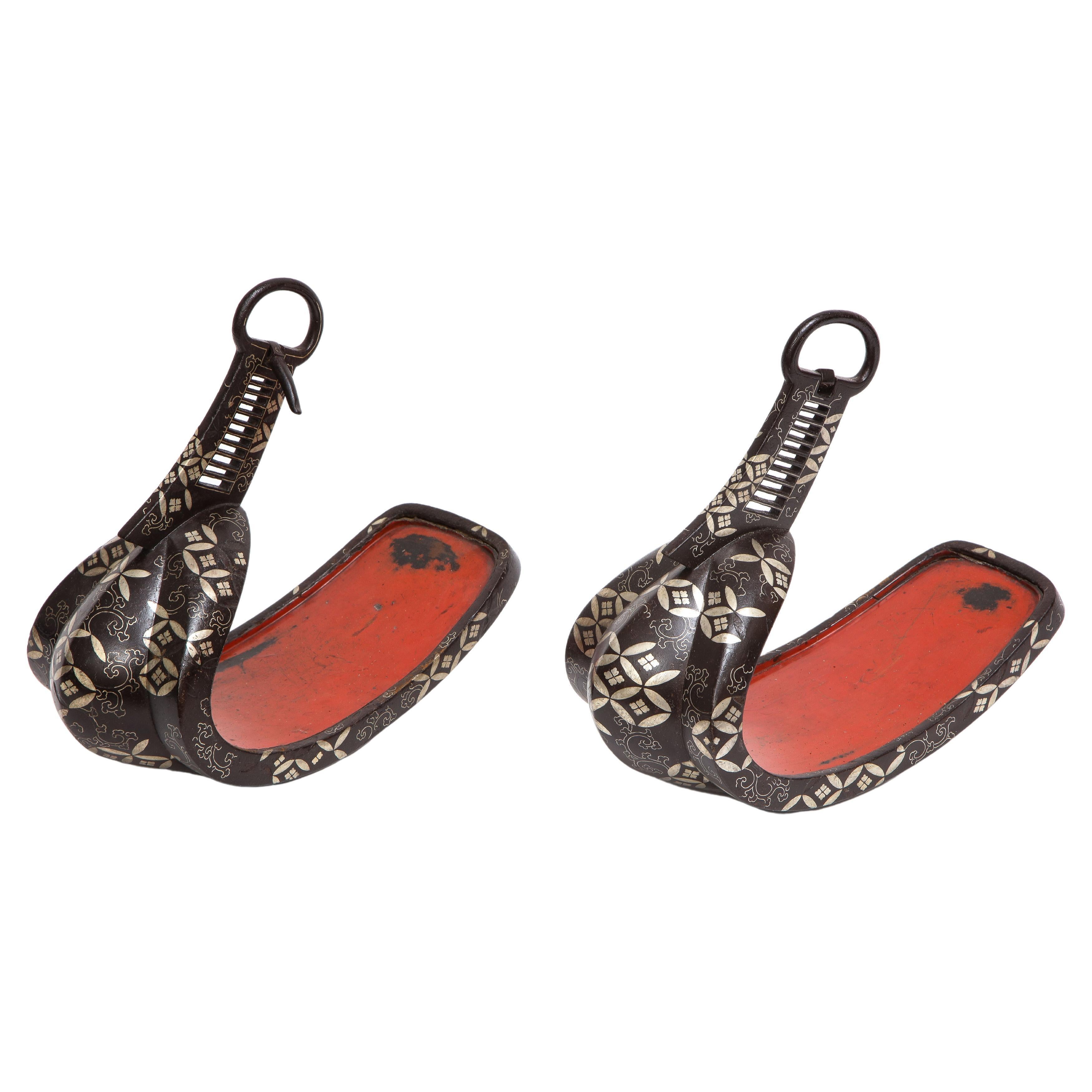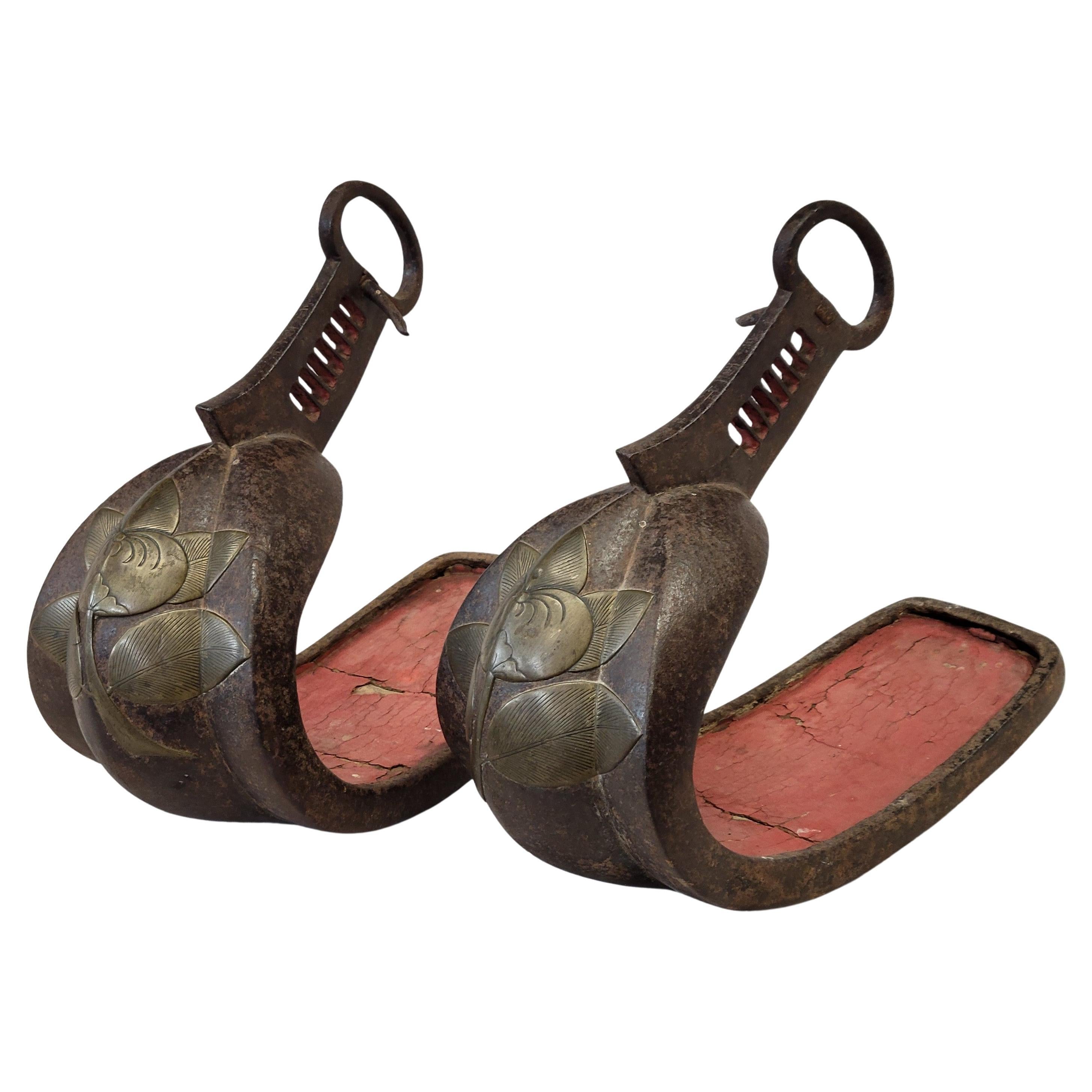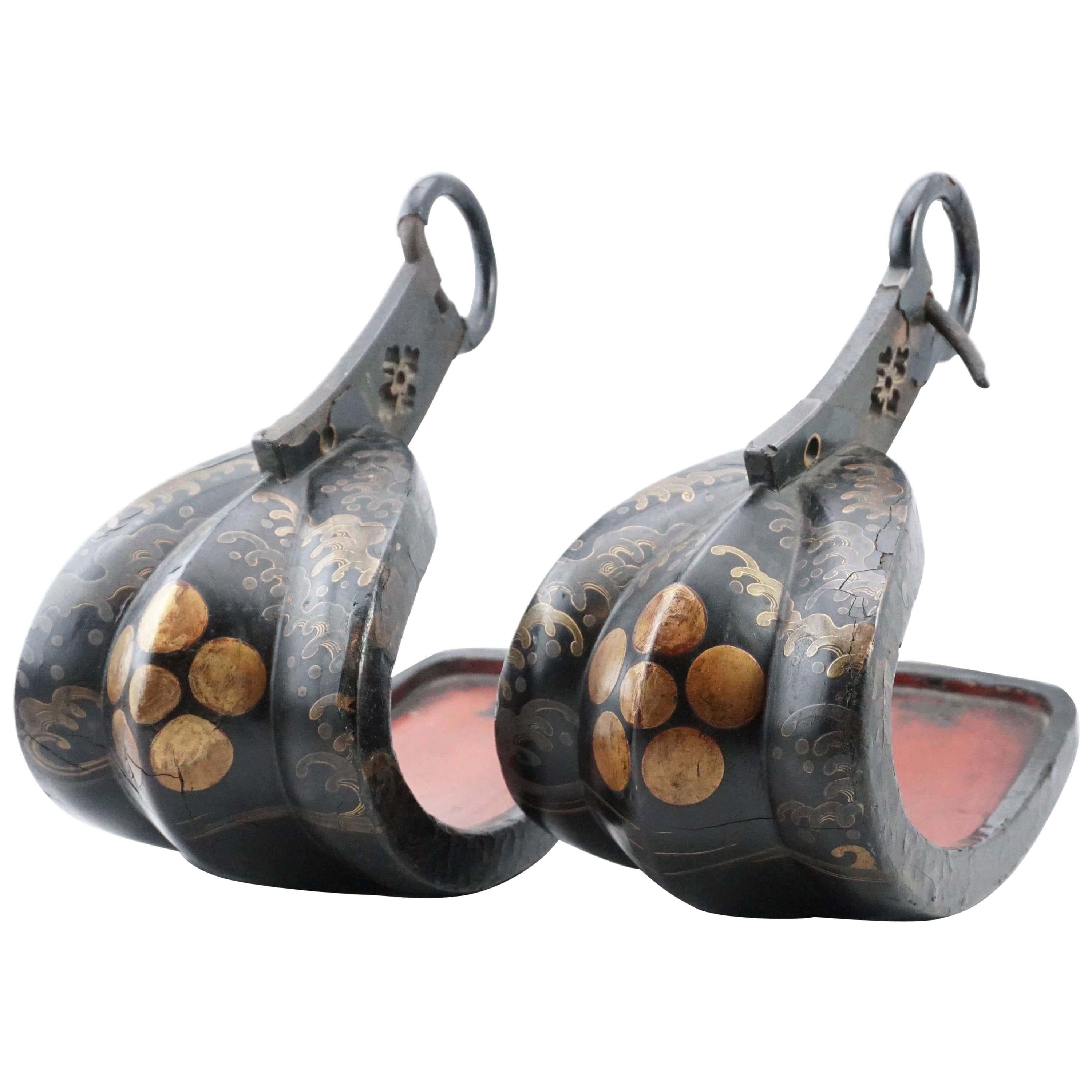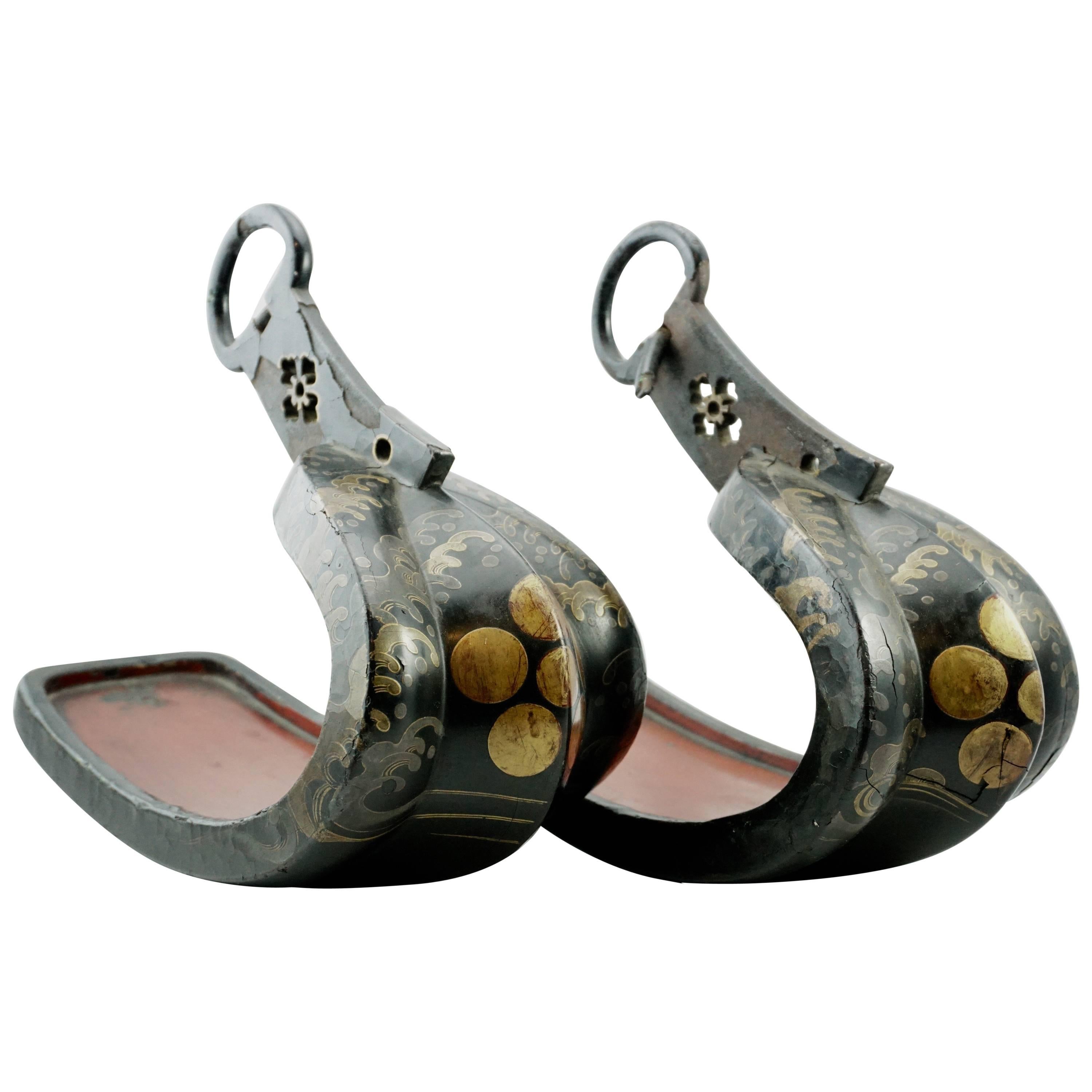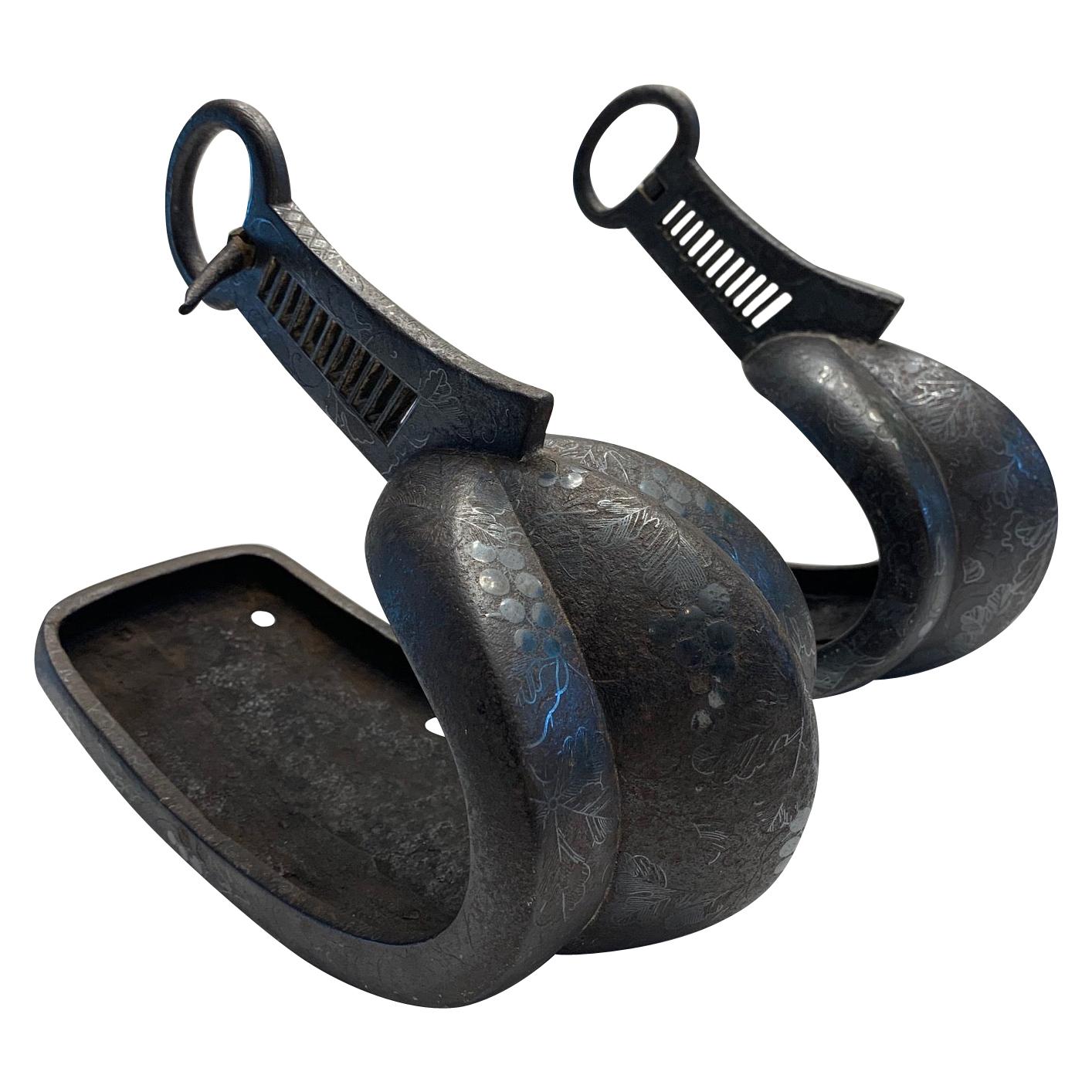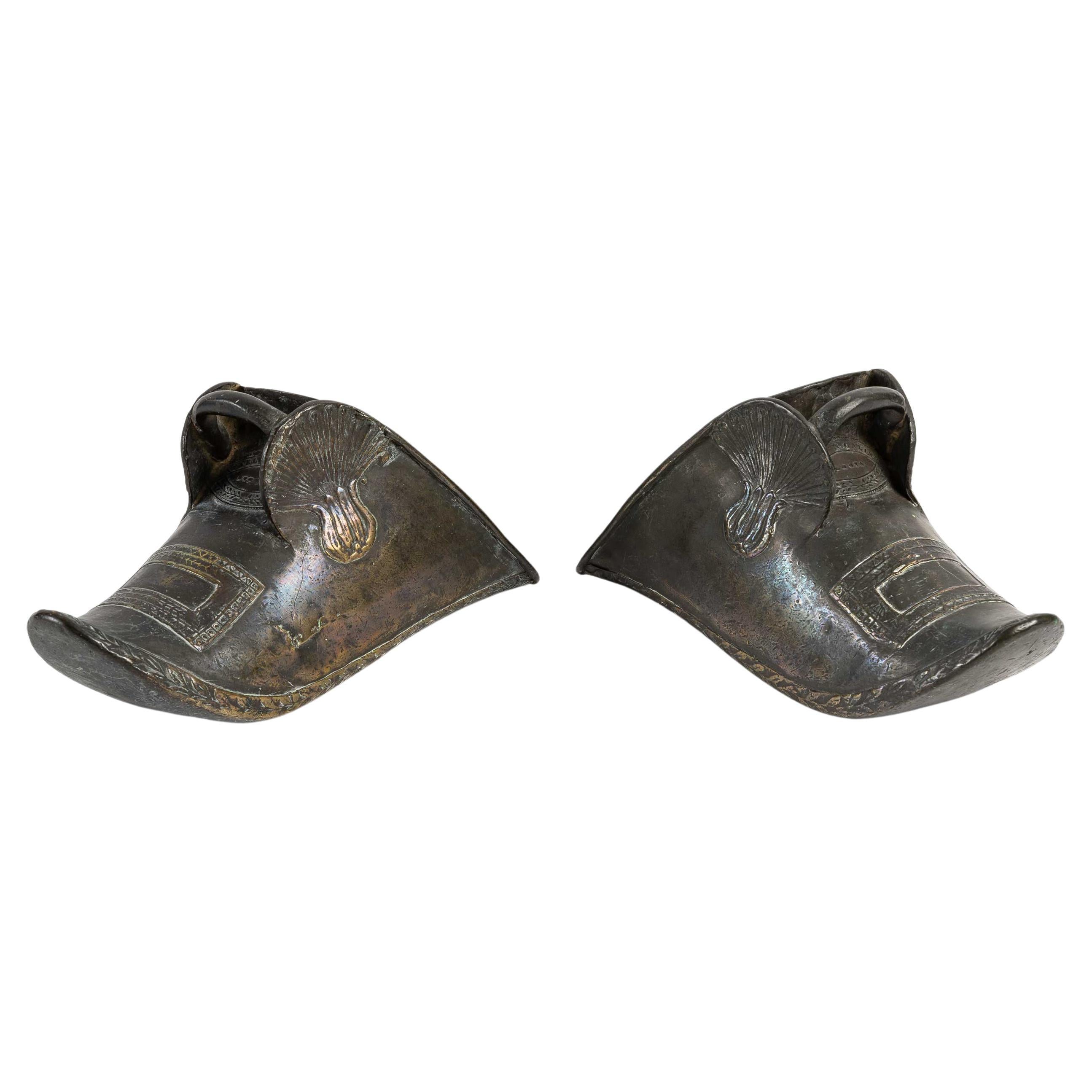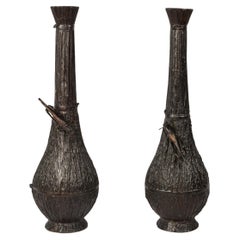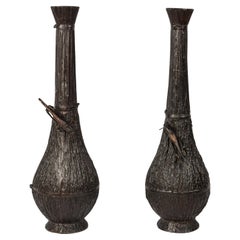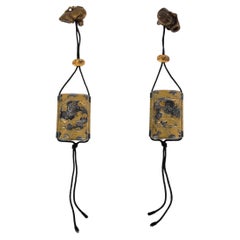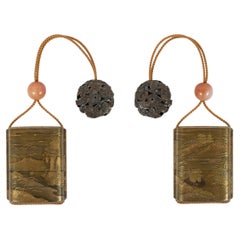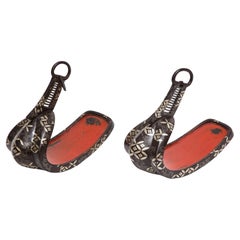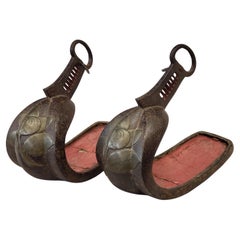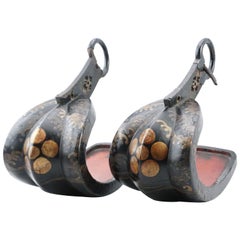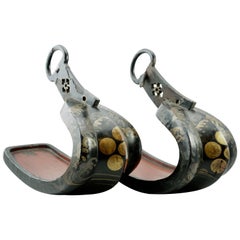Items Similar to Pair of Japanese Abumi Stirrups
Want more images or videos?
Request additional images or videos from the seller
1 of 9
Pair of Japanese Abumi Stirrups
$7,188.86per set
£5,350.65per set
€6,000per set
CA$9,846.94per set
A$10,951.95per set
CHF 5,718.77per set
MX$133,273.58per set
NOK 73,037.39per set
SEK 68,496.19per set
DKK 45,675.91per set
Shipping
Retrieving quote...The 1stDibs Promise:
Authenticity Guarantee,
Money-Back Guarantee,
24-Hour Cancellation
About the Item
Pair of stamped brass stirrups decorated with Hashizuka, Ito and Manabe Mons.
Japan - Edo (1615-1868), 18th century.
Height: 10.24 in. (26 cm), length: 12.6 in. (32 cm), width 4.72 in. (12 cm)
As in Western culture, the culture Japanese stirrups were part of traditional accessories used only by the nobility and the people belonging to the upper class. The stirrups were made in the most precious metal, they were intended to indicate the social status of the owner.
They were used in military combat during ceremony or daily. The traditional form of Japanese calipers take its source in the Heian period (Between 794 and 1185). During the Momoyama period some helmets and armor reflect the influence of Iberian armament but the shape of the Japanese stirrups remained unaltered. The arrival of the Portuguese in the archipelago had an impact at another level. The decoration is different. Because these pieces are melted in iron, they are highly resistant and also thoughts as powerful weapons. Volume and frontal prominence guaranteed considerable damage to their enemies especially when they were without frames. The presence of ganches proves that these calipers were manufactured by or for the Portuguese. The ganche being absent from the Japanese stirrups.
- Dimensions:Height: 10.24 in (26 cm)Width: 4.73 in (12 cm)Depth: 12.6 in (32 cm)
- Sold As:Set of 2
- Materials and Techniques:
- Place of Origin:
- Period:
- Date of Manufacture:1615-1868
- Condition:Wear consistent with age and use.
- Seller Location:PARIS, FR
- Reference Number:Seller: 2016-3651stDibs: LU8311234268662
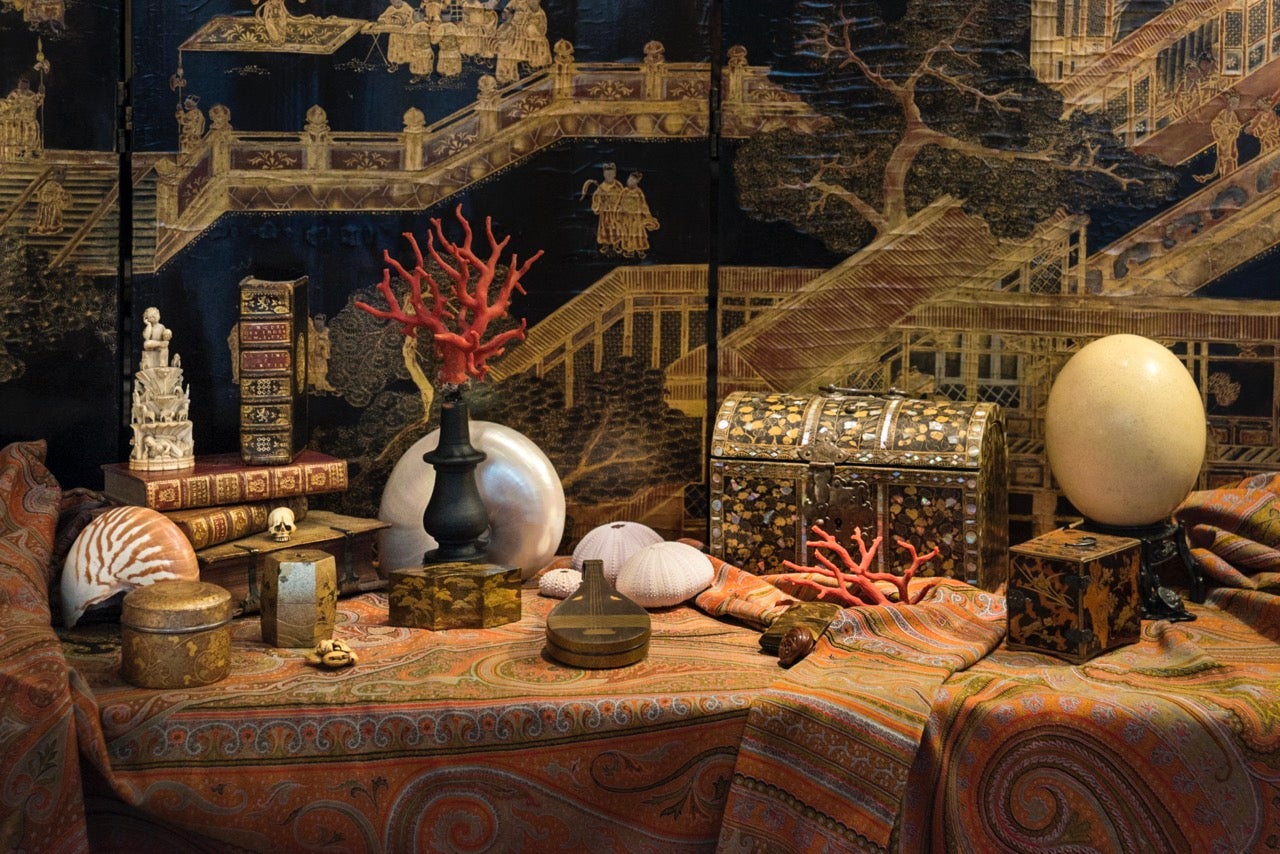
About the Seller
No Reviews Yet
Vetted Professional Seller
Every seller passes strict standards for authenticity and reliability
Established in 2013
1stDibs seller since 2023
Typical response time: Several days
- ShippingRetrieving quote...Shipping from: PARIS, France
- Return Policy
Authenticity Guarantee
In the unlikely event there’s an issue with an item’s authenticity, contact us within 1 year for a full refund. DetailsMoney-Back Guarantee
If your item is not as described, is damaged in transit, or does not arrive, contact us within 7 days for a full refund. Details24-Hour Cancellation
You have a 24-hour grace period in which to reconsider your purchase, with no questions asked.Vetted Professional Sellers
Our world-class sellers must adhere to strict standards for service and quality, maintaining the integrity of our listings.Price-Match Guarantee
If you find that a seller listed the same item for a lower price elsewhere, we’ll match it.Trusted Global Delivery
Our best-in-class carrier network provides specialized shipping options worldwide, including custom delivery.More From This Seller
View AllPair of Japanese Bronze Grasshopper Vases
Located in PARIS, FR
Insects (mushi) occupy an important place in Japanese culture. Hunting for insects is a popular pastime, especially among children. Using plastic nets and cages, they catch cicadas and beetles to observe them.
Between 1830 and 1832, Hokusai composed an untitled series of ten large horizontal prints...
Category
Antique Late 19th Century Japanese Metalwork
Materials
Bronze
$5,990 / set
Pair of japanese bronze vase imitating hay and decorated with a grass hopper
Located in PARIS, FR
Detailed pair of vases in bronze of baluster form, textured to represent straws of hay, bound together by three knots that divide each vase in three, just under le second ring, a well detailed grasshopper is detached from the rest of the composition.
Insects (mushi) occupy an important place in Japanese culture. Hunting for insects is a popular pastime, especially among children. Using plastic nets and cages, they catch cicadas and beetles to observe them.
Between 1830 and 1832, Hokusai composed an untitled series of ten large horizontal prints...
Category
Antique Late 19th Century Japanese Meiji Metalwork
Materials
Bronze
Inro Dragon
Located in PARIS, FR
Beautifull inro of six compartments made of black gold, silver and tin lacquer,
representing a dragon on each side, surrounded by black and silver clouds, the inside
is made of nas...
Category
Antique Early 19th Century Japanese Japonisme Lacquer
Materials
Lacquer
$11,981
Gold Lacquer Inro Decorated with a Lake Landscape
Located in PARIS, FR
Inro with four gold lacquer boxes, decorated with a lake landscape. Accompanied by a bronze ryusa manju.
Small boxes formed of compartments that fit one on top of the other, inro (? ?) are traditional Japanese clothing...
Category
Antique Mid-19th Century Lacquer
Materials
Lacquer
Japanese Smoking Set 'Tabac-Ire'
Located in PARIS, FR
Smoking set (tabako-ire) composed of a pipe (kiseru), a pipe case (kiseruzutsu) and a tabacco pouch (tonkotsu) for women linked to a netsuke.
Intended f...
Category
Antique Late 19th Century Japanese Antiquities
Materials
Metal
Bronze okimono sculpture of a catfish or namazu
Located in PARIS, FR
Sculpture or okimono in bronze of a wavy catfish emerging from calm water, scales are not represented, and its expression of eyes and mouth could be considered naive. One other inter...
Category
Early 20th Century Japanese Taisho Metalwork
Materials
Bronze
You May Also Like
Pair of Japanese Edo Period Iron Silver Inlaid Red Lacquered Stirrups 'Abumi'
Located in New York, NY
A Pair of Japanese Edo Period (1603–1867) iron, silver inlaid, and red lacquered stirrups (Abumi). Each of typical form, made of iron with silver inlay on the front with floral bloss...
Category
Antique 1690s Japanese Edo Metalwork
Materials
Silver, Iron
Antique Edo Period Japanese Samurai Iron Stirrups with Brass or Bronze Inlay
Located in Centennial, CO
A pair of antique Edo period (1603–1867) Japanese Samurai Abumis (stirrups for horseback-riding) expertly crafted out of cast iron with brass or bronze inlay in the form of a stylize...
Category
Antique 18th Century Japanese Edo Metalwork
Materials
Brass, Bronze, Iron
Japanese Samurai Abumi Stirrups Lacquer Edo, 18th Century
Located in Dallas, TX
Japanese Samurai Abumi Stirrups lacquer Edo late 18th century, early 19th century.
Measures: 12 inch length, 10 inch height, 5.5 inch width.
AVANTIQUES is dedicated to providing an...
Category
Antique Late 18th Century Japanese Edo Lacquer
Materials
Iron
Pair of 18th Century Japanese Edo Period Lacquered Samurai Iron Stirups
Located in Dallas, TX
18th century Japanese Edo period Lacquered Samouri Iron stirups with original wooden lacquered insoles. Truly a beautiful pair of Japanese ...
Category
Antique Late 18th Century Japanese Edo Metalwork
Materials
Iron
Antique Japanese Iron Stirrups with Silver Inlay Signed
Located in Atlanta, GA
A pair of antique Japanese Abumis, stirrup for horse-riding, in cast iron with elaborate silver inlay, circa 16th century Muramachi to Momoyama period. The prototype of Japanese abum...
Category
Antique 16th Century Japanese Japonisme Metalwork
Materials
Silver, Iron
Pair of Bronze Stirrups 'Estribos'
Located in Saint-Ouen, FR
Pair of Bronze stirrups (Estribos), 19th century.
Measures: H: 14 cm, W: 29 cm, D: 11 cm.
Category
Antique 19th Century European Sculptures and Carvings
Materials
Bronze
$1,557 / set
More Ways To Browse
Japanese Brass
Antique Brass Level
18th Century Asia Brass
Antique Military Helmets
Antique Stirrups
Brass Helmet
Japan Armor
Japanese Armour
Antique Japanese Armour
Heian Period
Japanese Helmet
Antique Japanese Helmet
Edo Period Japanese Armor
Antique Iron Stirrups
Stirrup Japan
Used Western Stirrups
Antique Calipers
Abumi Japanese Stirrup
